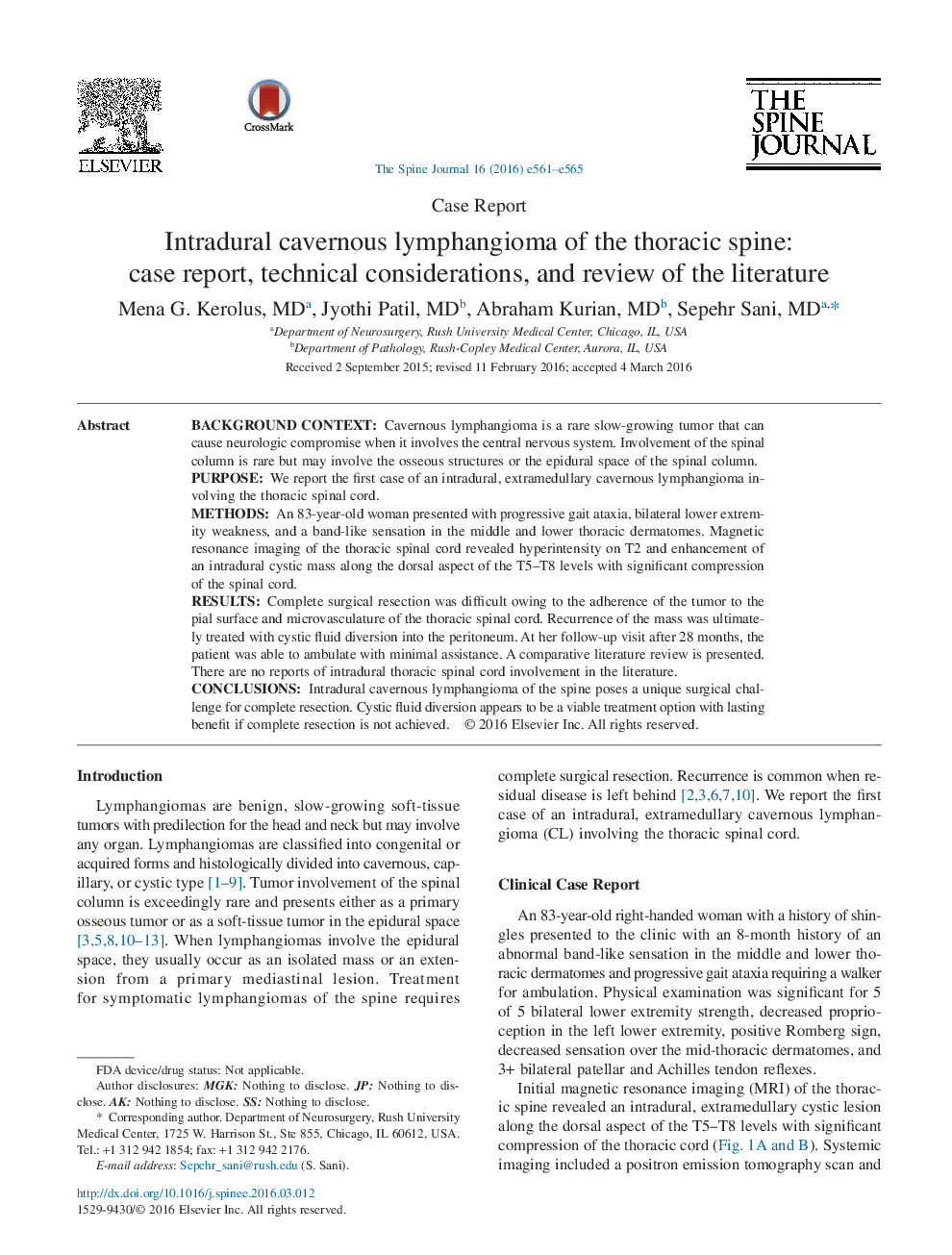| Article ID | Journal | Published Year | Pages | File Type |
|---|---|---|---|---|
| 4095841 | The Spine Journal | 2016 | 5 Pages |
Background ContextCavernous lymphangioma is a rare slow-growing tumor that can cause neurologic compromise when it involves the central nervous system. Involvement of the spinal column is rare but may involve the osseous structures or the epidural space of the spinal column.PurposeWe report the first case of an intradural, extramedullary cavernous lymphangioma involving the thoracic spinal cord.MethodsAn 83-year-old woman presented with progressive gait ataxia, bilateral lower extremity weakness, and a band-like sensation in the middle and lower thoracic dermatomes. Magnetic resonance imaging of the thoracic spinal cord revealed hyperintensity on T2 and enhancement of an intradural cystic mass along the dorsal aspect of the T5–T8 levels with significant compression of the spinal cord.ResultsComplete surgical resection was difficult owing to the adherence of the tumor to the pial surface and microvasculature of the thoracic spinal cord. Recurrence of the mass was ultimately treated with cystic fluid diversion into the peritoneum. At her follow-up visit after 28 months, the patient was able to ambulate with minimal assistance. A comparative literature review is presented. There are no reports of intradural thoracic spinal cord involvement in the literature.ConclusionsIntradural cavernous lymphangioma of the spine poses a unique surgical challenge for complete resection. Cystic fluid diversion appears to be a viable treatment option with lasting benefit if complete resection is not achieved.
